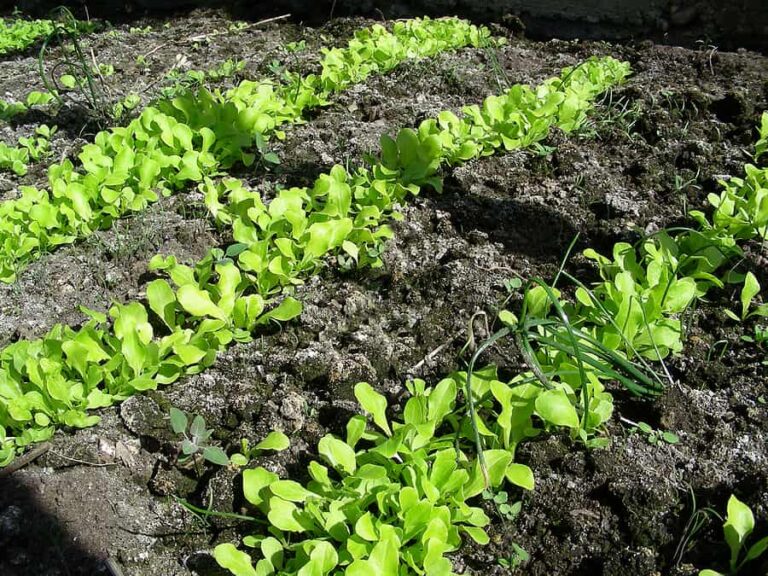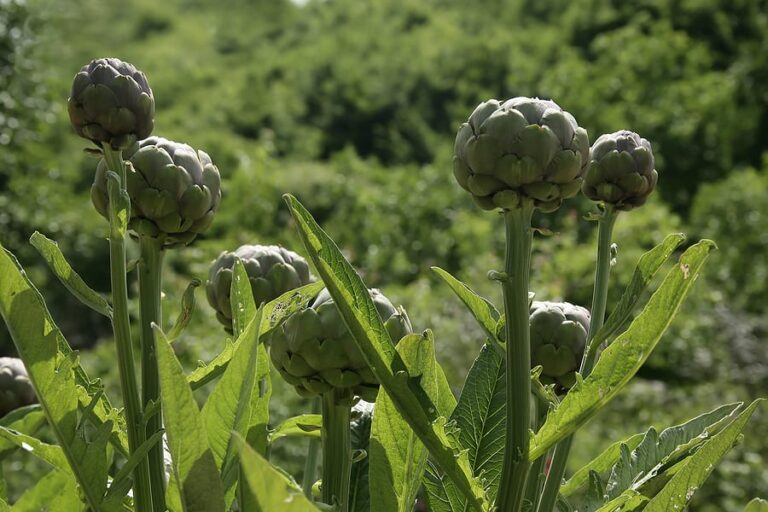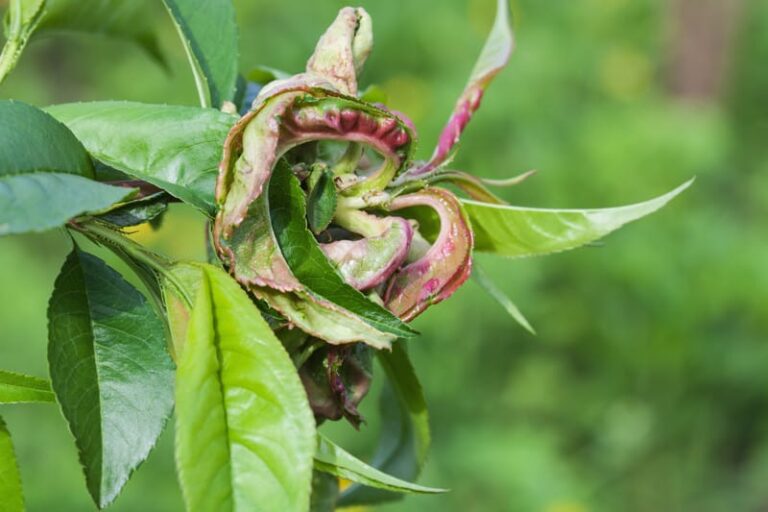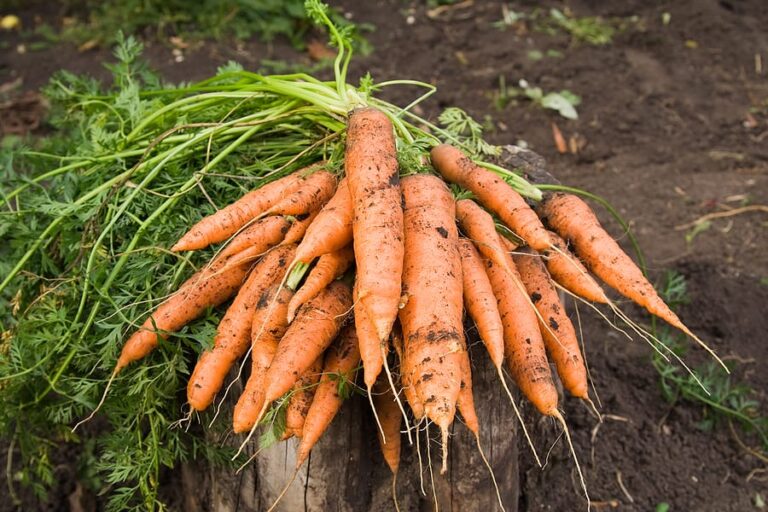Late Blight Fungus Disease
Late blight is a fungus disease that can infect tomato and potato plants. The disease spreads rapidly and will likely destroy the infected plant in a few days. Wind- and water-borne fungal spores can quickly spread to other plants—including eggplants, and peppers.
Late blight commonly strikes when nights are cool and moist and days are warm and humid.
Good Products for Pest and Disease Control at Amazon:
- Garden Safe Snail and Slug Bait
- Bonide Sulfur Fungicide
- Monterey BT Caterpillar Killer
- Neem Bliss 100-% Cold Pressed Neem Oil
- Safer Brand Insect Killing Soap
- PyGanic Botanical Insecticide
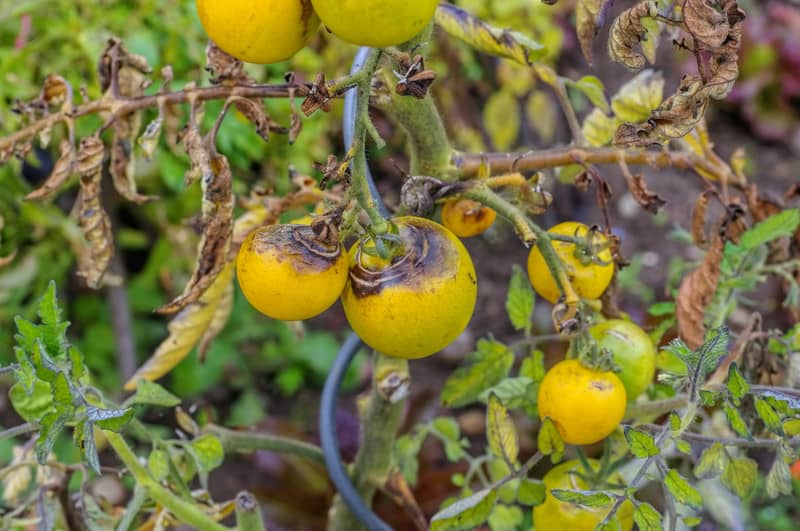
There is no reliable way to stop late blight once it takes hold in a garden. The best course is always to destroy infected plants immediately so that the disease does not spread.
Disease range: United States and southern Canada, particularly in humid regions.
Scientific name: Phytophthora infestans
Here are the basics for identifying and treating late blight:
Late blight target plants
Late blight commonly attacks tomato and potato plants
Late blight damage
Tomato leaves
Tomatoes leaves display water-soaked spots first on the lower leaves. Spots start out pale green. Diffuse irregular spots on appear on the upper side of leaves usually near the edges or tips of leaves. The spots turn brown to purplish-black and velvety with a pale green border on the underside of the leaf. Spots appear on young leaves at the top of the plant; spots look water-soaked; no concentric rings or defined borders around necrotic spots. In humid, wet conditions, a fuzzy ring of mold around the spot appears on the undersides of the leaves. In time, the leaves shrivel, turn brown, and die. The disease spreads rapidly.
Tomato stems
Black and brown lesions appear on the stem and petioles and spread. When petioles or leaf stalks are affected, the entire leaf can collapse. The entire vine or plant can quickly collapse and die in periods of high humidity.
Tomato fruit
Spots beneath the tomato’s skin develop into reddish-brown dry, leathery, firm spots. The spots appear on the tops and upper sides of green fruit. The spots grow larger; the skin wrinkles and darkens to chocolate brown. White mold can form on fruit in damp, humid conditions; soft rot sets in.
Potato leaves and stems
Small irregular pale to dark green spots appear on potato leaves—spots are surrounded by yellow rings. The spots can grow across leaf veins. The spots grow rapidly and enlarge in cool, moist weather becoming brown to purplish black. Entire leaflets may die. The disease can grow down the leaf stem to the main stem. White fungal growth appears on the underside of the leaves. The disease can spread from leaves across petioles to the vine or main stem
Potato tuber
The skin of the potato tuber becomes discolored typically turning from brown to purplish. Brownish dry, granular rot enters the tuber extending ½ to ¾ inch into the tuber. Rotting tubers have an unpleasant odor.
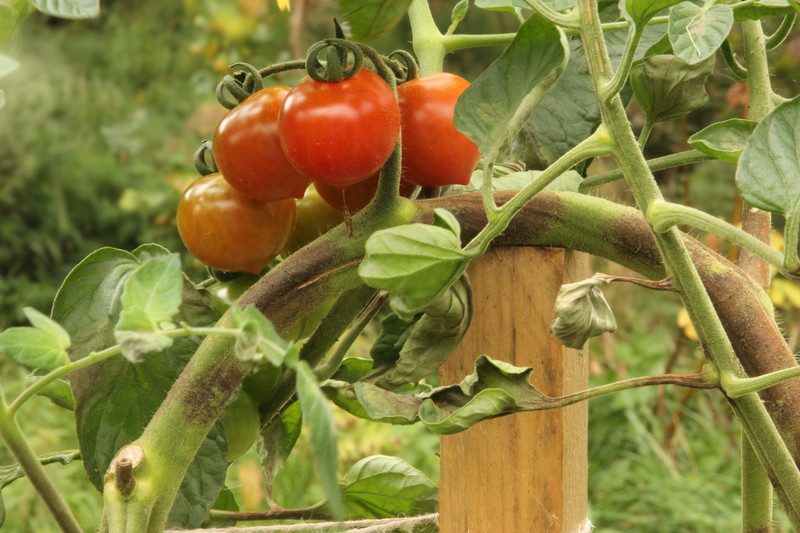
How late blight spreads
Late blight happens when there is high humidity and temperatures are between 60° and 80°F. It often strikes when nights are cool and moist and days are warm and humid. Late blight fungi spores are wind-, rain-, and soil-borne. Infection often occurs before plants blossom. Spores germinate readily at about 70°F.
Late blight organic control and prevention
Here are ways to prevent and control late blight:
- Keep plant foliage dry at all times; shelter plants in a clear plastic tent if the weather is wet.
- Do not overhead irrigate. Water only at the soil level.
- Check for symptoms every day when the weather is wet and humid.
- Treat plants with preventive sprays of compost tea or Bacillus subtilis.
- Pull and destroy the plant as soon as you recognize the disease; even if only a few leaves are infected. Dispose of infected material in a sealed plastic bag.
- Wash clothing and tools after handling infected plants.
- Hill potatoes to keep spores from reaching tubers.
- Remove all foliage from plants before harvesting potato tubers.
- Harvest potatoes only in dry weather.
- Do not store infected tubers or fruits.
- Select resistant varieties to plant in the future; plant only certified disease-free seed potatoes.
- Do not plant tomatoes and potatoes close to one another. Plant crops in different locations each year. Rotate when plants have been infected.
- Clean all tools and clothing after working with infected plants.
Late blight non-organic controls
- Copper fungal sprays can protect against infection, but the spray must be thorough and repeated often.
- Apply fungicide containing mancozeb every seven days, starting when shoots are 6 inches tall and continuing as long as vines are green.
General prevention of fungal diseases
- Improve air circulation around plants.
- Mulch around the base of plants to reduce water splashing.
- Do not use overhead watering.
- Control weeds.
- Rotate crops.
Related articles:
Vegetable Garden Diseases Problem Solver
Vegetable Garden Organic Weed Control
Vegetable Garden Organic Pest Control
Garden Planning Books at Amazon:


